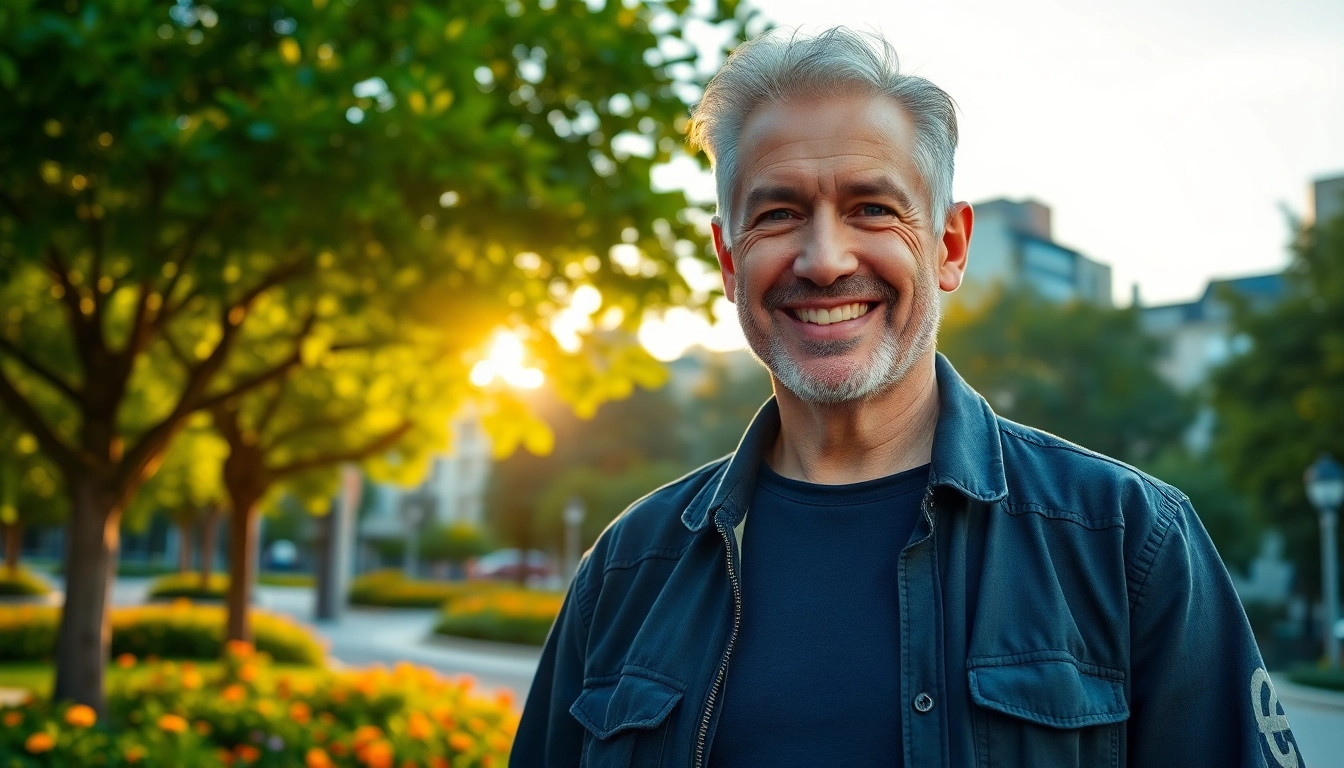Introduction to the Term DILF
The term dilf meaning has gained popularity in recent years, evolving from internet slang into a cultural phenomenon that captures a specific admiration for mature, attractive men. Originally emerging within online communities and pop culture, DILF is an acronym that stands for “Dad/Daddy I’d Like to F*.” Despite its provocative nature, the term is often used humorously or as a compliment, highlighting an individual’s attractiveness regardless of whether they are actually a father. Its rise in popularity reflects broader societal trends toward embracing diverse expressions of masculinity and sexuality, especially among younger generations who appreciate the appeal of older, confident, and charismatic men.
The Origins and Evolution of DILF
Historical Context and Early Usage
The origins of the term DILF can be traced back to the early 2000s, closely following the surge in popularity of the acronym MILF . While MILF was popularized in the late 1990s and early 2000s, notably through the film American Pie, DILF emerged as a playful extension of this cultural trend. It initially appeared in online forums, social media, and adult entertainment tags, quickly gaining traction among youth and pop culture enthusiasts who appreciated the humor and boldness of such terms.
Interestingly, the term’s roots are intertwined with the rise of internet meme culture, where abbreviations and acronyms are used for quick, humorous, or provocative communication. The term DILF was initially used in a tongue-in-cheek manner, often accompanied by memes and jokes that celebrated mature men who exuded masculinity, confidence, and attractiveness. Over time, DILF moved from niche online communities into mainstream media, further cementing its place in popular lexicon.
From Slang to Cultural Staple
As social media platforms like Instagram, Reddit, and TikTok grew, so did the visibility of DILF. Memes, viral videos, and social commentary turned the term into a cultural staple, often used to describe celebrities, fictional characters, or everyday men who embody the ideal attributes associated with the label. The transition from internet slang to mainstream usage signifies a broader societal acceptance of celebrating older, attractive men, challenging traditional notions that youth is the sole marker of attractiveness.
Throughout its evolution, DILF has also become associated with humor and self-awareness, often used in playful contexts or as a term of endearment among fans and admirers. This duality — as both a compliment and a humorous remark — helps explain its widespread appeal across different demographics.
DILF in Popular Culture: Films, TV Shows, and Video Games
Representation in Films and Television
The portrayal of DILF characters in movies and TV shows has significantly contributed to the term’s popularity. Notably, American Pie Presents: The Book of Love (2009), a film that follows the franchise’s humorous exploration of sexuality, introduces a character explicitly labeled as a DILF — Rob’s father. This portrayal taps into the comedic aspect of the term while also showcasing a mature, attractive male figure who exudes confidence and charm. The film’s humor and exaggerated stereotypes play into the cultural stereotype of the DILF as a desirable, strong, and protective figure.
Similarly, in the hit TV series Riverdale, which started in 2017, the character Fred Andrews, played by Luke Perry, has often been regarded by fans as a quintessential DILF. His role as a caring, handsome, and mature father figure resonated with audiences, further popularizing the archetype of the attractive, mature man who embodies both strength and compassion.
Video Game Characters and Fictional Icons
Beyond traditional media, the gaming world has also contributed to the DILF phenomenon. A notable example is the character Daddy Halsin from the popular role-playing game Baldur’s Gate III. Fans affectionately dubbed him “Daddy Halsin” due to his protective demeanor, commanding presence, and rugged attractiveness. This nickname underscores how the archetype extends beyond real-world figures into fictional characters that embody qualities associated with the DILF label — strength, maturity, and a nurturing yet commanding personality.
This crossover between gaming and pop culture illustrates how the DILF archetype has become a versatile symbol of masculinity that resonates across various entertainment mediums. It also highlights the ways in which fans engage with characters, projecting attributes like attractiveness, protectiveness, and maturity onto them, thereby elevating fictional figures into cultural icons.
The Role of DILF in Internet Culture and Social Media
Social Media Trends and Communities
The digital age has played a pivotal role in popularizing and normalizing the concept of DILF. Instagram accounts like DILFs of Disneyland have amassed hundreds of thousands of followers by sharing candid photos of attractive, mature men enjoying family outings at Disneyland. This account showcases real-life DILFs, emphasizing the appeal of older men who exude charisma and confidence in everyday settings.
Similarly, Reddit’s r/DILFs community, with nearly 100,000 members, functions as a hub where enthusiasts share images, stories, and discussions about DILFs. This NSFW community is a testament to how the term has evolved into a subculture, where admiration for mature men is expressed openly, often with humor and camaraderie. These platforms have helped to destigmatize discussions surrounding male attractiveness regardless of age, promoting body positivity and confidence among older men.
Viral Content and Memes
Memes and viral videos have further cemented DILF within online culture. From humorous TikTok clips to Instagram reels, content creators regularly highlight traits associated with DILFs—such as rugged looks, fatherly charm, or protective behavior—often juxtaposed with humorous captions or commentary. This content frequently blurs the line between admiration and satire, contributing to the term’s playful and accepting nature.
The proliferation of such content has helped shift perceptions, making the idea of being a DILF more mainstream and less taboo. It also encourages older men to embrace their attractiveness and confidence, knowing they are appreciated and celebrated online.
How DILF Differs from and Relates to MILF
Comparative Analysis
The terms DILF and MILF are often juxtaposed or compared, given their similar structures and cultural origins. While MILF specifically refers to attractive mothers, often portrayed as desirable and confident, DILF emphasizes the appeal of mature men, typically with qualities like strength, stability, and attractiveness. Both terms challenge traditional ageist stereotypes, promoting the idea that attractiveness and desirability are not confined to youth.
However, the key difference lies in their cultural connotations and societal perceptions. MILF is often associated with sexuality, independence, and confidence in women, whereas DILF is linked more with masculinity, protectiveness, and maturity in men. Despite these differences, both terms have become symbols of empowerment and self-assurance for their respective genders.
Shared Cultural Themes
Both DILF and MILF have become part of the broader conversation about sexuality, attractiveness, and societal standards. They serve as expressions of admiration that challenge ageist stereotypes, emphasizing that attractiveness can be ageless and multifaceted. Their popularity in media, social media, and adult entertainment underscores a cultural shift toward embracing diverse expressions of sexuality and masculinity/femininity.
The Cultural Significance and Modern Perceptions
Changing Attitudes Toward Age and Attractiveness
The rise of the DILF term reflects a broader cultural acceptance of aging and attractiveness. In traditional media, older men were often portrayed as less desirable or merely as parental figures. Today, however, there is a growing appreciation for mature men who exude confidence, style, and charisma. This shift is partly due to changing societal attitudes about masculinity, self-expression, and sexuality.
In modern culture, being labeled a DILF can be seen as a compliment that celebrates maturity, experience, and attractiveness. It encourages men to embrace aging with pride and confidence, breaking down stereotypes that associate aging with decline or unattractiveness.
Perceptions and Controversies
While the term DILF is largely embraced in pop culture and online communities, it is not without controversy. Some view the term as objectifying or trivializing masculinity, especially when used in adult entertainment or explicit contexts. Others argue that it reinforces superficial standards of attractiveness that prioritize physical appearance over personality or character.
Despite these debates, the general trend indicates a more inclusive and accepting attitude toward older men’s sexuality and appeal. As conversations about body positivity and self-acceptance continue to grow, the perception of DILF is likely to evolve further, becoming an even more integral part of modern masculinity discourse.
Conclusion: The Growing Popularity and Future of the Term / Understanding the DILF Meaning: Origins, Cultural Impact, and Popularity
The term dilf meaning has transitioned from internet slang to a widely recognized cultural archetype that celebrates the attractiveness and charisma of mature men. Its origins are rooted in humor, internet meme culture, and media representations that challenge traditional age-related stereotypes. From films and TV shows to video games and social media, the DILF archetype continues to evolve, reflecting changing societal attitudes toward masculinity, aging, and attractiveness.
Its popularity is bolstered by online communities, viral content, and the growing acceptance of diverse expressions of sexuality. As society continues to embrace the idea that attractiveness is not limited to youth, the DILF term is likely to grow in prominence, serving as both a celebration of masculinity and a symbol of confidence for men of all ages.
Understanding the dilf meaning within this cultural context reveals its significance not just as slang but as a reflection of broader societal shifts. It embodies a move toward appreciating mature masculinity, breaking down ageist stereotypes, and fostering a culture that values confidence and charisma over youth alone. As the conversation about beauty and desirability continues to evolve, so too will the role and perception of DILFs in popular culture and everyday life.



